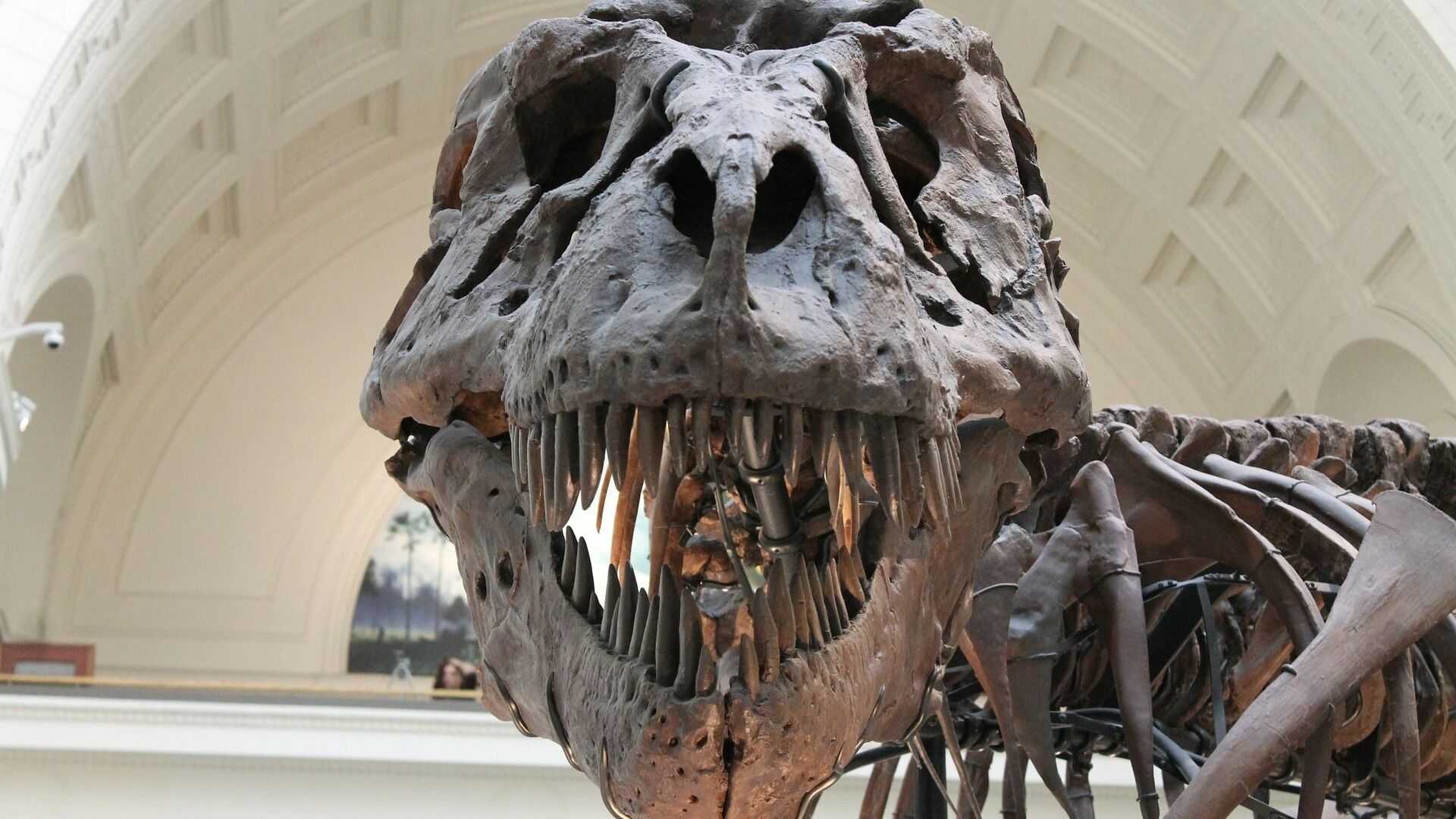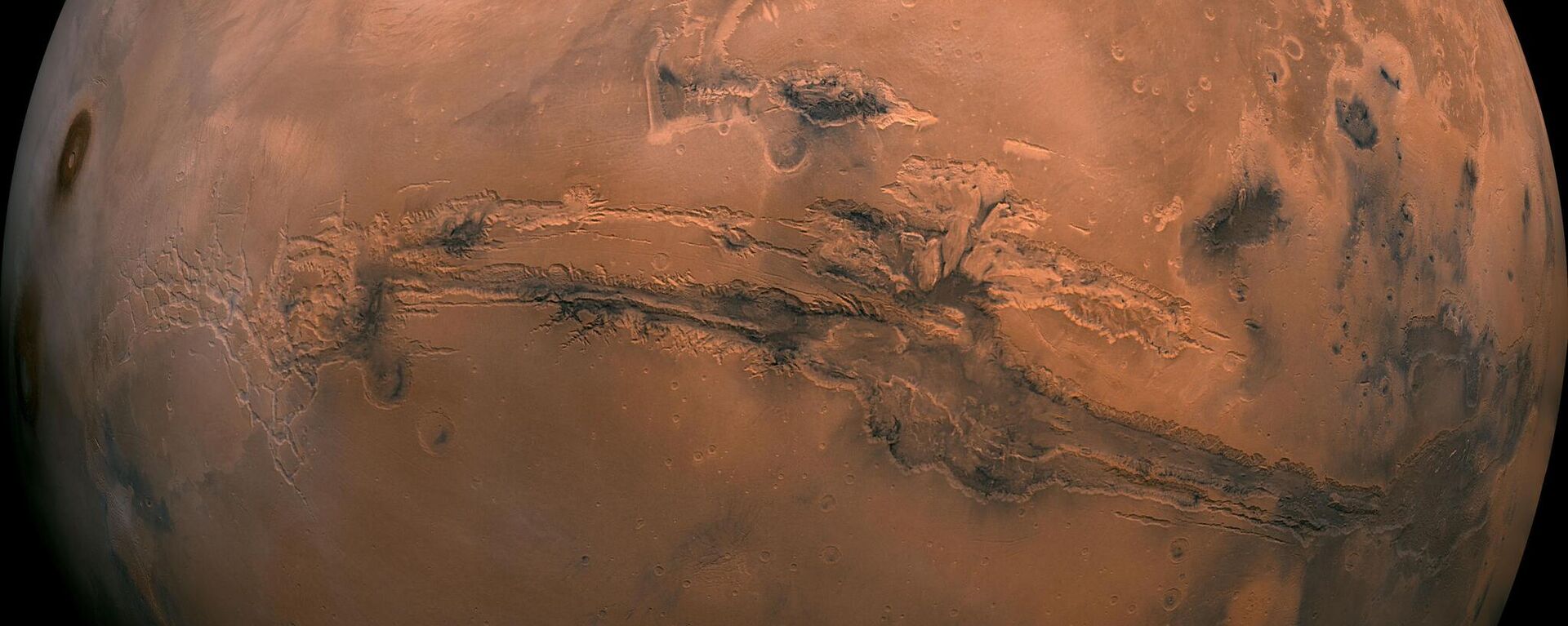https://sputnikglobe.com/20230713/rare-dino-discovery-made-in-dc-suburb-after-officials-find-115-million-year-old-fossils-1111843595.html
Rare Dino Discovery Made in DC Suburb After Officials Find 115-Million-Year-Old Fossils
Rare Dino Discovery Made in DC Suburb After Officials Find 115-Million-Year-Old Fossils
Sputnik International
The bone bed discovery is extremely rare for the Eastern US.
2023-07-13T01:53+0000
2023-07-13T01:53+0000
2023-07-13T01:51+0000
beyond politics
fossil
fossil
dinosaur
maryland
washington dc
paleontology
https://cdn1.img.sputnikglobe.com/img/107966/54/1079665448_0:100:1920:1180_1920x0_80_0_0_e3b49585f2720982de91ba666d57b781.jpg
Officials on Wednesday revealed the shocking discovery of a bone bed at Dinosaur Park - both a public and active US dig site - in Laurel, Maryland, marking the first of its kind in the area in since 1887.The dig site contained the largest therapod fossil in eastern North America: a three-foot-long shin bone officials believe is from an Acrocanthosaurus, a dinosaur considered the largest North American predator for its time. The dinosaur is said to have grown to nearly 40 feet long and 13 feet tall, and weighed about 5,280 pounds (2.6 tons).While paleontologists first made the discovery in April, the fossil was initially found when a large piece of equipment accidentally broke off a rock face and exposed the fossil of a huge dinosaur bone in 2018. Plans to extract the bone were paused following the start of the COVID-19 pandemic. Then in 2021 as the dig came underway, scientists determined there was more than one bone embedded in the rock.To date, more than 100 fossils estimated to be some 115 million years old were found in the area paleontologists refer to as the bone bed, the term used to describe a concentration of bones that belong to one or more species within a geologic layer."Dinosaur fossils are exceptionally rare in the eastern US, and among these only Maryland has produced dinosaurs from the Early Cretaceous Period," Matthew Carrano, a paleontologist with the Smithsonian, explained in a release, adding that such fossils are typically found just one or two at a time, and are not typically discovered in such an industrialized area as Maryland's Prince George’s County.“Our knowledge of the dinosaurs in the eastern part of North America has been lacking compared to what we know about in the West,” added Thomas Holtz, a dinosaur paleontologist at the University of Maryland.Officials have explained that the bone bed is created from an ancient river bed carrying dead dinosaurs and other organisms, such as plants, down a current. When the remains get stuck they eventually sink into the earth, and the bones and plants become rock (fossils).
https://sputnikglobe.com/20230712/scientists-find-new-organic-matter-pointing-to-possible-martian-life-1111840418.html
maryland
washington dc
Sputnik International
feedback@sputniknews.com
+74956456601
MIA „Rossiya Segodnya“
2023
News
en_EN
Sputnik International
feedback@sputniknews.com
+74956456601
MIA „Rossiya Segodnya“
Sputnik International
feedback@sputniknews.com
+74956456601
MIA „Rossiya Segodnya“
fossils, dinosaur, dinosaur bone, paleontology, maryland, washington, dc, us, north america
fossils, dinosaur, dinosaur bone, paleontology, maryland, washington, dc, us, north america
Rare Dino Discovery Made in DC Suburb After Officials Find 115-Million-Year-Old Fossils
A bone bed is considered any stratum of rock that house fossilized remains, with sites typically either containing one or more species in a compacted area.
Officials on Wednesday
revealed the shocking discovery of a bone bed at Dinosaur Park - both a public and active US dig site - in Laurel, Maryland, marking the first of its kind in the area in since 1887.
The dig site contained the largest therapod fossil in eastern North America: a three-foot-long shin bone officials believe is from an Acrocanthosaurus, a dinosaur considered the largest North American predator for its time. The dinosaur is said to have grown to nearly 40 feet long and 13 feet tall, and weighed about 5,280 pounds (2.6 tons).
"Finding a bone bed like this is a dream for many paleontologists," said JP Hodnett, a paleontologist with Prince George’s County Parks and Recreation. He added that the discovery, which was first made on Earth Day this year, is “the first of its kind to ever be found on this side of the United States”.
While paleontologists first made the discovery in April, the fossil was initially found when a large piece of equipment accidentally broke off a rock face and exposed the fossil of a huge dinosaur bone in
2018. Plans to extract the bone were paused following the start of the COVID-19 pandemic. Then in 2021 as the dig came underway, scientists determined there was more than one bone embedded in the rock.
To date, more than 100 fossils estimated to be some 115 million years old were found in the area paleontologists refer to as the bone bed, the term used to describe a concentration of bones that belong to one or more species within a geologic layer.
"Dinosaur fossils are exceptionally rare in the eastern US, and among these only Maryland has produced dinosaurs from the Early Cretaceous Period," Matthew Carrano, a paleontologist with the Smithsonian, explained in a release, adding that such fossils are typically found just one or two at a time, and are not typically discovered in such an industrialized area as Maryland's Prince George’s County.
“Our knowledge of the dinosaurs in the eastern part of North America has been lacking compared to what we know about in the West,” added Thomas Holtz, a dinosaur paleontologist at the University of Maryland.
“But this site is helping to change that because finally we’re beginning to get multiple bones, some of whom represent probably the same individual. That would give us a lot more information than we have had in the past.”
Officials have explained that the bone bed is created from an ancient river bed carrying dead dinosaurs and other organisms, such as plants, down a current. When the remains get stuck they eventually sink into the earth, and the bones and plants become rock (
fossils).



